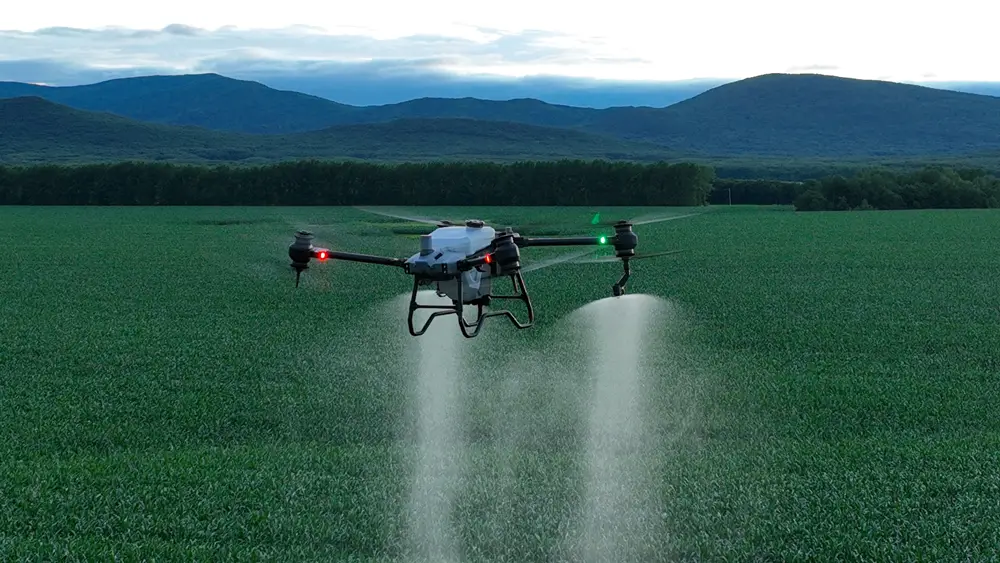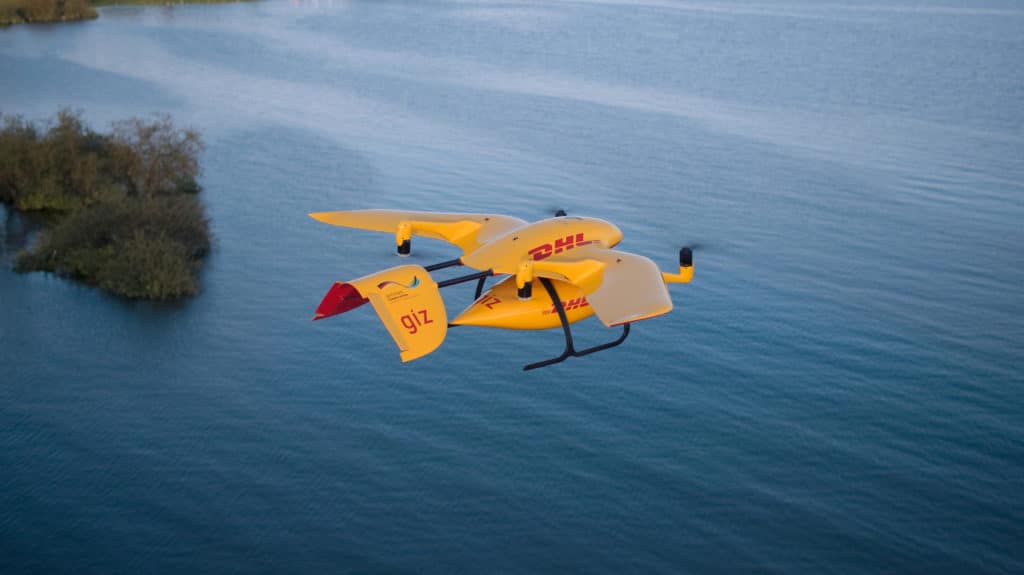As the world grapples with numerous challenges, including climate change, pollution, deforestation, biodiversity reduction, and urban expansion, the quest for sustainable and efficient agriculture has never been more critical. With the global population growing exponentially, the demand for affordable and high-quality produce continues to rise. Herein lies the transformative value of drone technology in the agricultural sector.
Given the escalating costs of labor and inputs, coupled with the increased pressure on land resources, enhancing agricultural productivity is vital for our future. The agricultural practice that has sustained us for centuries has evolved into a sophisticated science today, necessitating the use of advanced technologies for improved outcomes.
Drones serve as powerful tools in this context, offering tremendous advantages to farmers. They are not just an accessory, but a vital instrument for agricultural operations, promising efficiency and precision in the face of growing demands. Drones enhance the sustainability of farms, enabling farmers to respond effectively to the urgent need for increased yields and productivity.
Therefore, drones are revolutionizing the agricultural industry, proving to be more than just a technological advancement. They are a necessity, pivotal in catering to the world’s growing food needs while ensuring the survival and success of modern-day farming.
How Drone Technology Can Aid and Assist Agriculture
Monitoring and Measuring
By utilizing sensors and aerial footage, large areas of land can be covered rapidly, efficiently, and affordably.
As a result of this information, farmers can ensure that crops are being inspected, irrigation systems are functioning properly, and livestock is being monitored. The data will help identify possible problems so that they can be resolved as soon as possible. Missing livestock can be identified and injured animals can be treated promptly.
Mapping and Planning
Accurate detailed maps can be generated allowing for improved planning. Resources such as fertilisers, fungicides, and pesticides can be more effectively allocated resulting in improved performance and cost savings.
A farmer cannot manage what he cannot measure. Rapid and regular mapping provides those managing crops with detailed and relevant information. Information that is critical to the success of their crops.
Modern agriculture drones use a range of technologies to improve the results. One of these is multispectral sensors. This technology allows for the early detection of diseases and other issues that might affect crops. Early knowledge and identification of these and other issues will reduce risks and improve yields.
The data is accurate and available as and when needed. It allows the farmer to have a precise understanding of his land as often as necessary. Mapping goes much further than simple geographics. Current technology will deliver essential data related to the agricultural area. This data allows farmers to optimize production and output.
Spraying
Modified drones can safely and accurately spray crops. It is especially handy in hard-to-reach areas. It is more accurate and therefore there is less wastage resulting in cost savings.
Traditional crop spraying was an expensive exercise. It also came with a lot of risk given the low level of flying. Another issue was an irritation to neighbouring areas. Some areas are a challenge to reach with fixed-wing aeroplanes whereas drones can reach these with ease, and without risk.
The use of drone technology for crop spraying has radically transformed this essential practice.
This video illustrates the effectiveness of drone crop spraying. In this case, they use the formidable DJI Agras T30.
Timing is another critical factor. If fungicides or other applications are necessary, they are needed quickly. Drones can be deployed instantaneously. Drones are also useful for rapid irrigation when necessary as well as weed control.
The operation is precise and accurate, cost-effective, and quickly deployable. It is a massive advantage to farmers.
Seed Dispersal and Planting
Drones can also be modified to rapidly plant seedlings or disperse seeds. This drone application has made significant progress in reforesting areas decimated by wildfires as well as other natural or environmental disasters.
Disease and Pest Control
The bane of any farmer’s job is diseases and pests. Using drones equipped with sensors and thermal cameras problems can be detected early on allowing for rapid action.
These are just a few of the main applications. As the technology improves there is sure to be innovation and we will see many additional benefits of drones in agriculture.
Drone Companies in Agriculture
There are many companies investing heavily in researching and developing new, better, and more effective drones for agriculture. Here are a few of the leading companies.
XAG
XAG is at the cutting edge of agricultural drone technology. The innovative company uses a range of drones as well as Artificial Intelligence (AI), the Internet of Things (IoT) and other technologies to deliver a range of advanced drone solutions to farmers throughout the world.
Their official video explains some of their products and solutions.
DJI
As one of the leading drone manufacturers, it is no surprise that DJI is a significant player in agricultural drones. They offer a range of solutions for various applications. Their equipment is known for durability and reliability as well as ease of use.
DJI constantly innovates to improve and enhance their drones and deliver new products where there is a need. They are backed by many years of experience and invest heavily in research and development.
This video will give you some insight into some of what they have to offer.
Parrot
Parrot is a name familiar to most drone enthusiasts. While they make a range of consumer drones they are also active in drones adapted specifically for agriculture. The PARROT BLUEGRASS is one of their leading models used for agriculture. You can see the full details and specs here.
They are generally more affordable than DJI, XAG, and some others. One of the great things about Parrot drones is that they are super-easy to operate. No advanced flying skills are needed to get excellent results.
AgEagle
Specializing in advanced sensors and software, AgEagle makes a range of drones for various industries including agriculture. They incorporate AI and machine learning driven by their powerful software. This allows them to deliver accurate reliable data.
American Robotics
The main advantage offered by American Robotics is fully automated solutions. Once set up according to your needs the drones operate autonomously. They have a weatherproof charging base and will automatically operate without the need for a pilot.
Data is processed and analyzed and fed back to the relevant parties. This allows the farmer to have the necessary data whenever needed without spending time controlling the drone.
Example of Real World Value
In a two-year project, WatchITgrow, a consortium of seven partners led by Inagro utilized drone technology to monitor potato growth and improve yields.
In order to monitor potato fields, the consortium used drones equipped with multispectral cameras. These drones collected data on crop growth, plant health, and even disease detection, helping farmers make well-informed decisions about irrigation, fertilization, and pest control.
Drones were successfully used to identify areas of the field that were infested with potato cyst nematodes, which are detrimental to potato crops. As a result of the early identification, farmers were able to address the issue immediately, effectively preventing significant crop losses.
It optimized resources, improved crop management, and increased potato yields by using drone technology. In demonstrating how advanced technology could be leveraged to benefit sustainable farming practices, ‘WatchITgrow’ was hailed as a significant step forward in the digital transformation of agriculture.
Conclusion
There is little doubt that these drones are an invaluable tool for the modern farmer. While many are relatively expensive they soon pay for themselves. With better information productivity is sure to improve. The farmer can get more done in less time and with improved safety. Those that fail to embrace drones will find it increasingly difficult to compete with the farms that harness the technology.
So far the adoption has been rapid but the impact is still not at its height just yet. With Drone-in-a-box technology alongside regulatory approvals for BVLOS operations, coupled with autonomous identification and application… This is when we will see the greatest spike in value for the use of drones in agriculture. We aren’t very far off, but as with many things, the cards will need to line up. As the regulators remove red tape, and make it easier for innovation to take hold, we’ll see a boom in this sector for sure.




